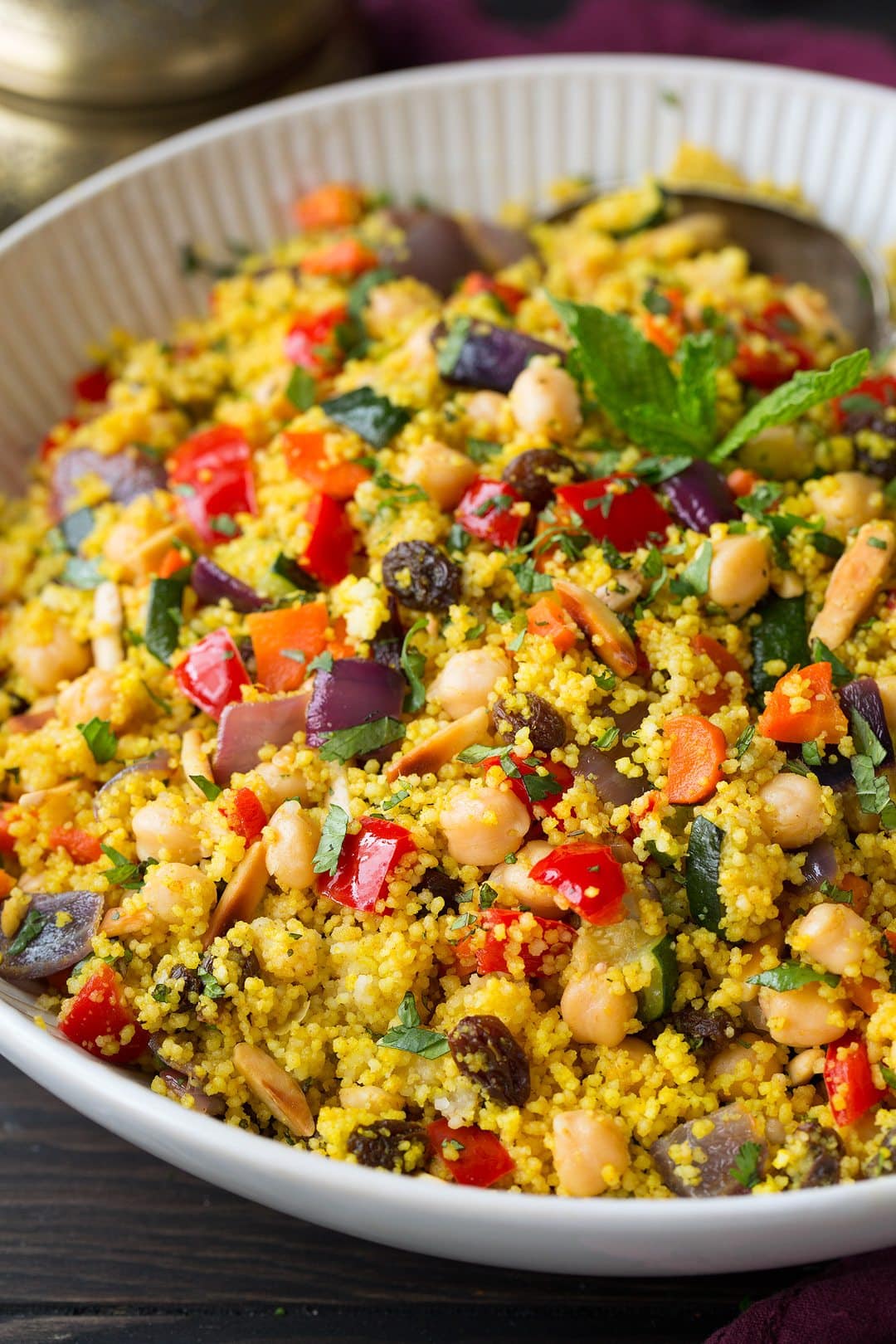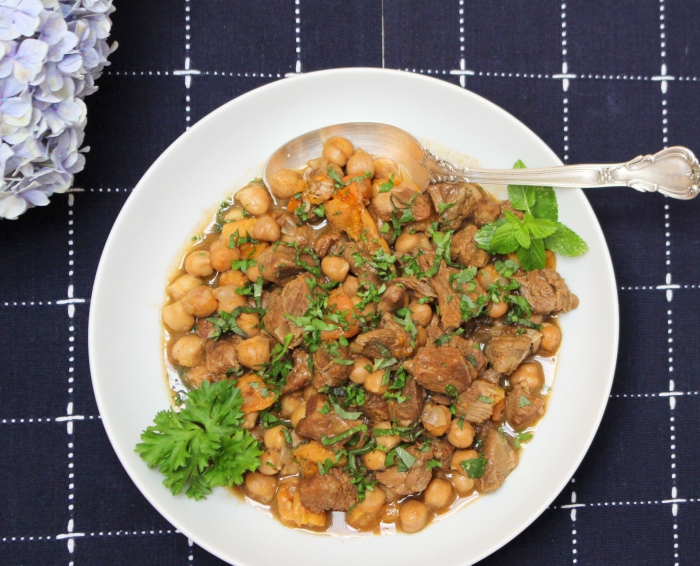Mediterranean Food in Las Vegas: A Fusion of Vibrancy and Taste
Mediterranean Food in Las Vegas: A Fusion of Vibrancy and Taste
Blog Article
Mediterranean Food: A Flavorful Trip Via Custom and Preference
Mediterranean food works as an exceptional intersection of custom and preference, attracting from a diverse variety of cultures that span continents. This culinary heritage not just showcases the use of fresh, neighborhood ingredients however additionally highlights the relevance of communal eating experiences that have actually been cherished for generations. The profound tastes and health benefits connected with the Mediterranean diet regimen have gathered international admiration, yet underneath its surface area exists a complicated story of historic impacts and local specializeds that call for further exploration. What special aspects add to its long-lasting charm and relevance in modern cooking practices?
Beginnings of Mediterranean Food
The beginnings of Mediterranean food are deeply rooted in an abundant tapestry of history, geography, and cultural exchange. This culinary tradition arises from an area specified by its varied landscapes, consisting of coasts, hills, and productive plains, which have actually affected its agricultural practices and food production. The Mediterranean Container, incorporating nations such as Italy, Greece, Spain, and Turkey, has actually been a crossroads of human beings for millennia, where profession paths assisted in the exchange of components, methods, and culinary philosophies.
Old societies, including the Greeks and Romans, substantially shaped Mediterranean foodways, emphasizing the relevance of fresh, seasonal fruit and vegetables and common dining. The spread of farming, especially the cultivation of olives, grapes, and grains, laid the structure for meals that remain staples today. The influence of numerous conquerors and traders, such as the Moors and Ottomans, presented cooking designs and new tastes, even more improving the cuisine.
Today, Mediterranean food is celebrated not just for its flavor and variety but likewise for its emphasis on healthy eating, personifying a balanced strategy to nutrition that proceeds to appeal to worldwide tastes. This historical interaction of cultures and components creates the essence of what we now identify as Mediterranean food.
Key Components and Tastes
Mediterranean food is defined by a vivid range of vital ingredients and tastes that reflect the region's farming bounty and cultural heritage. Central to this cooking practice are fresh vegetables, fruits, and natural herbs, which supply crucial nutrients and lively tastes. mediterranean restaurant las vegas. Staples such as tomatoes, eggplants, olives, and bell peppers are often featured, showcasing the area's diverse environment and soil
Olive oil, usually pertained to as the foundation of Mediterranean food preparation, imparts richness and depth to dishes. It is matched by a range of natural herbs and seasonings, including garlic, oregano, and basil, which boost the tastes of meats, fish and shellfish, and grains. Grains, particularly wheat and rice, function as fundamental components, with recipes like couscous and pasta being staples across the area.
In addition, vegetables such as lentils and chickpeas not only provide healthy protein however likewise contribute to the food's robustness. Jointly, these components develop an unified equilibrium that defines Mediterranean cuisine.
Regional Variants and Specialties
Diverse regional variants and specialties identify Mediterranean food, showing the unique social influences, geography, and background of each area. In the seaside areas of Italy, for example, seafood preponderates, with dishes like Sicilian caponata showcasing a mix of eggplant, olives, and capers. At the same time, Greece is renowned for its usage of feta cheese, olives, and fresh herbs, evident in timeless preparations such as moussaka and spanakopita.
The Levantine nations, including Lebanon and Syria, stress using grains and flavors, with specializeds like tabbouleh and kibbeh taking center stage. North Africa, specifically Morocco, stands apart for its fragrant tagines and couscous, commonly enriched with dried fruits and a rich range of spices.
In contrast, the Iberian Peninsula highlights the usage of Read Full Article healed meats and bold flavors, with Spanish paella and Portuguese bacalhau exhibiting the region's culinary diversity.
Each Mediterranean area not only commemorates its regional active ingredients but also mirrors the historic profession routes and cultural exchanges that have formed its food society, developing a vivid tapestry of tastes that captivates the palate.
Cooking Methods and Designs
Food preparation methods and designs in Mediterranean food are as differed as the areas themselves, frequently showing readily available active ingredients and regional customs. The heart of Mediterranean cooking depends on its simplicity, where fresh produce, herbs, and olive oil take spotlight. Strategies such as grilling, roasting, and sautéing are typically utilized, allowing the natural tastes of the active ingredients to beam.
Cooking, common in coastal areas, infuses fish and shellfish and meats with a great smoky splendor, while toasting, specifically in the Middle East, boosts the sweet taste of origin veggies and meats. Sautéing, often used in Spanish and italian recipes, provides a quick approach to highlight the richness of garlic and onions, working as a foundation for several sauces.
Stewing is one more important strategy, particularly in North African foods, where tagines simmer aromatic spices and tender meats gradually, combining flavors with time - mediterranean restaurant las vegas. Cooking, especially visit the site in the context of bread and breads, holds a significant area in Mediterranean society, with each region boasting its very own specializeds. Overall, these diverse food preparation approaches not only commemorate the ingredients however also mirror the deep-rooted cooking heritage of the Mediterranean, making each meal a testimony to its rich history

Health And Wellness Conveniences of Mediterranean Diet Regimen
Routinely identified for its various health advantages, the Mediterranean diet emphasizes the intake of entire, minimally processed foods that advertise overall health. This nutritional pattern is rich in fruits, veggies, entire grains, beans, nuts, and healthy fats, specifically olive oil, while urging moderate consumption of fish and chicken and restricting red meat and desserts.
Research study learn this here now regularly connects the Mediterranean diet plan to a variety of health advantages. Especially, it has been connected with a lowered danger of cardio illness, largely because of its focus on heart-healthy fats and anti-oxidants. The diet regimen is also thought to boost cognitive function and might lower the danger of neurodegenerative diseases such as Alzheimer's.
In Addition, the Mediterranean diet regimen sustains weight management via its emphasis on nutrient-dense foods that promote satiation. The high fiber content from fruits, vegetables, and entire grains help food digestion and aids keep healthy blood sugar level levels.
Along with physical health, the Mediterranean diet plan cultivates social well-being, as it encourages common dishes and shared culinary experiences. On the whole, adopting this diet plan is not just a path to enhanced health and wellness but likewise a party of tastes, culture, and neighborhood.

Final Thought
In conclusion, Mediterranean food serves as an abundant tapestry of tradition and preference, showcasing varied regional tastes and ingredients. The focus on fresh fruit and vegetables, olive oil, and aromatic herbs not only enhances culinary experiences yet additionally advertises numerous health and wellness advantages. By accepting classic cooking methods and fostering common eating, this culinary heritage continues to motivate and link individuals across cultures, strengthening its status as a valued and prominent part of global gastronomy.

Cooking strategies and styles in Mediterranean food are as differed as the regions themselves, usually showing readily available ingredients and local practices.In conclusion, Mediterranean cuisine offers as an abundant tapestry of tradition and preference, showcasing varied local flavors and components.
Report this page